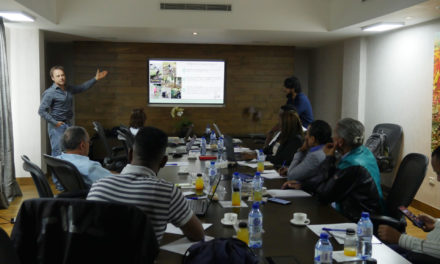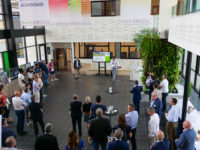The Cacao Forest Project’s Participatory Experimental Network (REP) uses four agroforestry models developed jointly with Dominican cocoa producers. These models feature between four and 10 varieties of cacao trees along with two to 10 associated cultivated species.
The best way to ensure the identical reproduction of a given variety is to use what are known as vegetative propagation techniques such as cuttage, grafting and somatic embryogenesis. These techniques, most of which have been in use for centuries, require know-how and patience but are a good way to be sure in particular of the origin of the cultivated plants and their genetic potential.

Training producers working with our partner COOPROAGRO (province of Duarte) in the theory of grafting
This applies especially to grafted cacao plants. On our parcels, these plantlets comprise a young shoot from a local cacao bean planted into a bag filled with a mixture of earth, sand and sawdust, called a rootstock. It is onto this plantlet that is grafted one of the 19 varieties of cacao trees selected by the Dominican producers in the four agroforestry models, using an ancient technique that originated in China several thousand years ago.

Field demonstration of the double terminal slit grafting technique
This technique has two advantages. Firstly, it retains the genetic potential of a given variety, replicating it exactly. Secondly, it enables cacao production to start earlier, around two years after the seedling is transplanted on the parcel.












